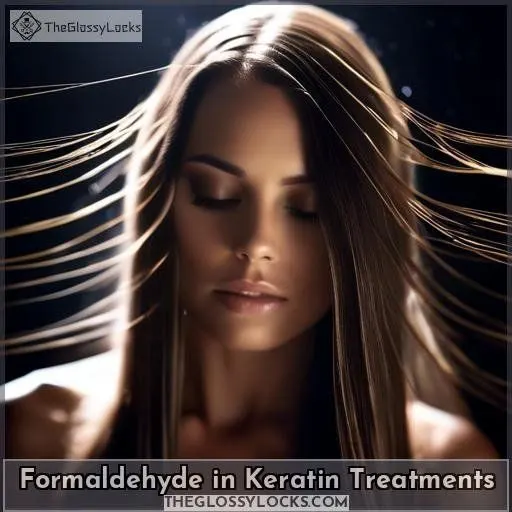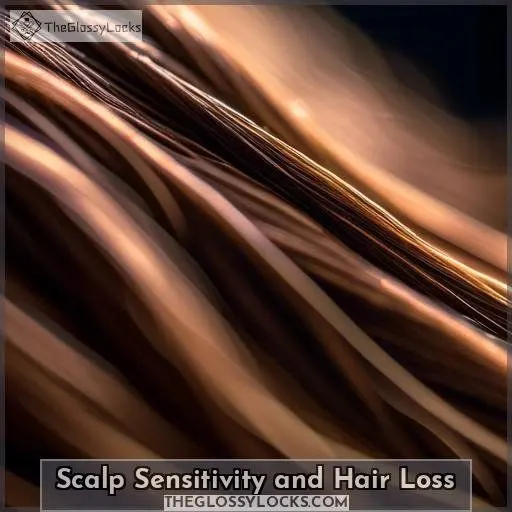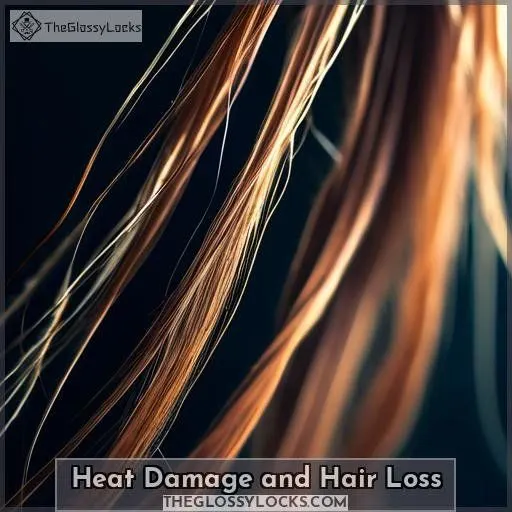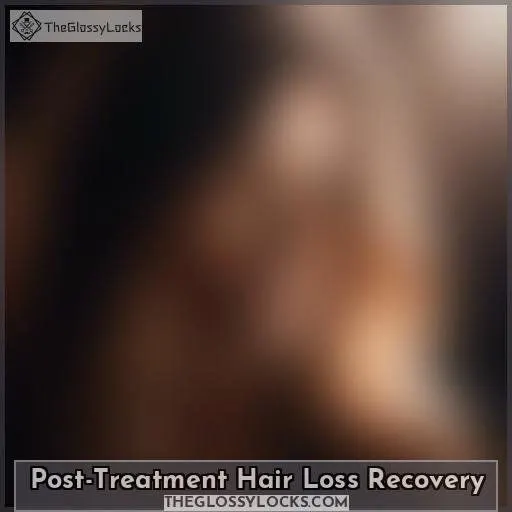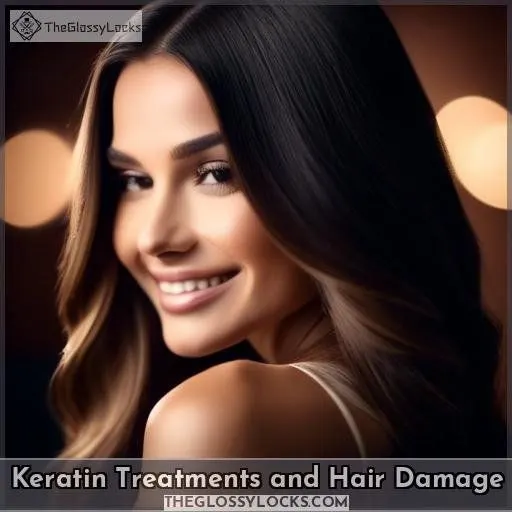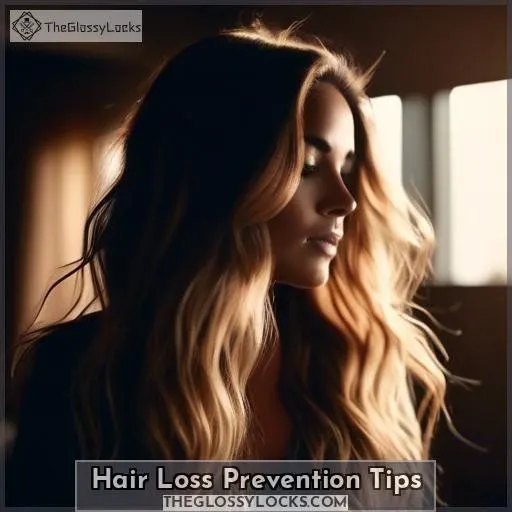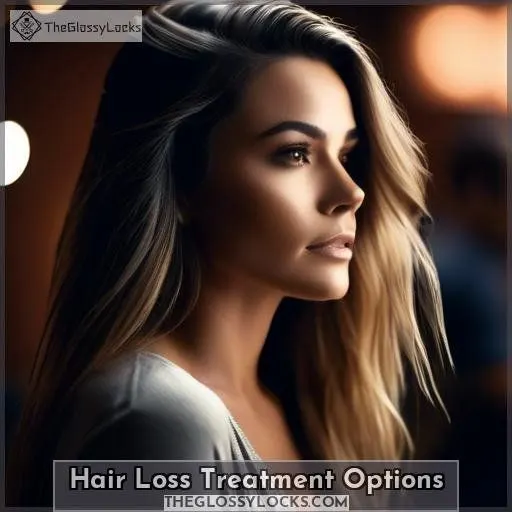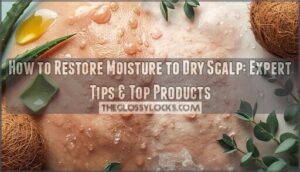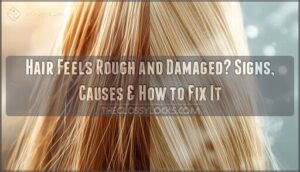This site is supported by our readers. We may earn a commission, at no cost to you, if you purchase through links.
 Imagine your hair shedding like autumn leaves, a sight no one desires.
Imagine your hair shedding like autumn leaves, a sight no one desires.
Smoothening treatments promise silkiness but often leave a trail of hair fall in their wake.
You’re not alone in this struggle.
The key to regaining control lies in understanding and addressing the root causes.
This guide offers practical tips and solutions to control hair fall after smoothening treatment, empowering you with knowledge and strategies to restore your hair’s health and confidence.
Let’s dive into the solutions that await.
Table Of Contents
Key Takeaways
- Avoid harsh chemicals: Limit the use of keratin treatments and opt for gentle products that minimize scalp sensitivity and hair loss.
- Maintain scalp health: Regularly cleanse and massage the scalp to promote hair growth and prevent irritation.
- Protect hair from heat damage: Use lower heat settings on styling tools and apply heat protectant products to minimize damage.
- Post-treatment care: Moisturize hair, use gentle shampoo, practice stress management, and avoid brushing wet hair to aid in recovery and prevent further damage.
Keratin Treatments and Hair Loss
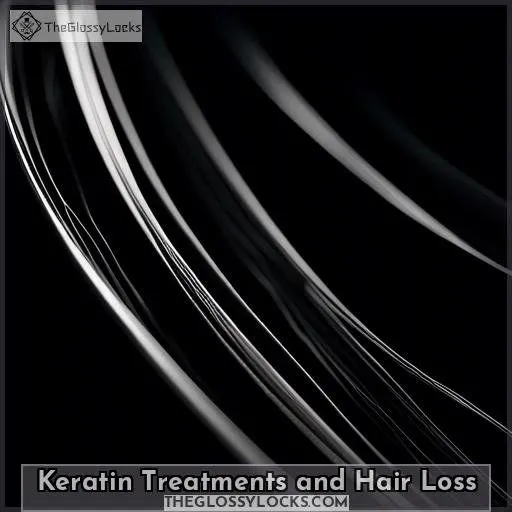
Keratin treatments can be a game-changer for your hair, but let’s talk about the not-so-fun part – hair loss.
When it comes to keratin treatments and hair loss, it’s like a delicate dance. The strong chemicals in these treatments can sometimes lead to hair loss, especially if your scalp is sensitive.
Picture this: your hair is like a garden, and keratin treatments are the fertilizer.
So, while keratin can work wonders for smoothing and adding shine, it’s essential to tread carefully to avoid any unwanted fallout.
Formaldehyde in Keratin Treatments
Transitioning from the impact of keratin treatments on hair loss, let’s delve into the role of formaldehyde in these treatments. Formaldehyde, a common ingredient in some keratin treatments, can have significant effects on your hair health.
- Formaldehyde Exposure: Formaldehyde in keratin treatments can weaken hair follicles, leading to potential hair loss.
- Scalp Sensitivity: Individuals with sensitive scalps may experience adverse reactions to formaldehyde, triggering scalp irritation and subsequent hair loss.
- Hair Damage: The harsh chemicals and heat used in keratin treatments, including formaldehyde, can damage hair follicles, making them prone to breakage.
Understanding the impact of formaldehyde in keratin treatments is crucial for maintaining healthy and vibrant hair.
Scalp Sensitivity and Hair Loss
Scalp sensitivity can trigger hair loss, especially when exposed to harsh chemicals in treatments. Chemical reactions may lead to scalp irritation, causing prolonged inflammation and weakening hair follicles.
Individuals vary in susceptibility, with sensitive scalps prone to adverse reactions. To prevent hair loss, it’s crucial to address scalp health and minimize irritants. Consider gentle products to avoid exacerbating sensitivity and potential hair loss issues.
Stay mindful of your scalp’s needs to nurture your locks and maintain a healthy head of hair.
Heat Damage and Hair Loss
Heat damage can wreak havoc on your hair, weakening it and making it more prone to breakage. When your hair is exposed to high temperatures from styling tools like blow dryers, flat irons, or curling irons, the protective layers of your hair shaft can open up, leading to moisture loss and damage to the protein structure of your hair.
Signs of heat damage include split ends, dryness, dullness, increased breakage, shedding, and even color fading. While there’s no quick fix for repairing heat-damaged hair, prevention is key. Consider regular trims, using lower heat settings on styling tools, applying heat protectant products, and giving your hair breaks from heat styling to maintain its health and prevent further damage.
Post-Treatment Hair Loss Recovery
After a smoothening treatment, you might notice your hair feeling like it’s on a strike, shedding more than usual.
Start by giving your locks a drink—moisturizing hair is key. Swap out harsh cleansers for gentle shampooing; think of it as a soothing spa day for your scalp.
A little scalp massage goes a long way in waking up those sleepy follicles, encouraging them to hold onto hair like it’s precious gold. Stress management isn’t just good for your mind; it’s a secret weapon against hair fall.
And remember, brushing wet hair? That’s a big no-no. It’s like pulling at a delicate thread—only leads to more unraveling. Stick with these steps, and you’ll navigate the post-treatment recovery with finesse, keeping hair fall at bay.
Keratin Treatments and Hair Damage
Keratin treatments, while promising smoother and shinier hair, can also lead to hair damage if not approached with caution. The chemicals and heat involved in these treatments can weaken hair follicles, making them more prone to breakage and damage.
It’s essential to be aware of the potential risks associated with keratin treatments, such as formaldehyde exposure, scalp sensitivity, and the use of harsh chemicals that can impact hair health negatively.
To mitigate the risk of hair damage post-treatment, it’s crucial to focus on nourishing and caring for your hair properly. Regular conditioning, gentle shampooing, avoiding excessive heat styling, and maintaining a balanced diet rich in essential nutrients are key steps to promote hair health and reduce the chances of damage and breakage.
Hair Loss Prevention Tips
To prevent hair loss post-smoothening, prioritize nourishing conditioner for hydration. Opt for a gentle shampoo routine and indulge in scalp massages to boost blood flow.
Managing stress levels is key to halting further hair loss, while avoiding brushing wet hair minimizes breakage. Remember, a balanced diet rich in essential nutrients supports optimal hair health.
Embrace these simple yet effective tips to safeguard your locks and promote hair growth. So, lather up with care, massage away the stress, and let your hair shine with health and vitality.
Hair Loss Treatment Options
When it comes to tackling hair loss post-smoothening treatment, you have a range of effective options at your disposal. From medicated shampoos to topical lotions and PRP therapy, the choices are diverse.
Consider incorporating a biotin supplement into your routine to support hair health. These treatments, including PRP therapy and hair serums, can be tailored to your specific needs and may vary in cost, duration, and results.
Frequently Asked Questions (FAQs)
Can hair smoothening cause permanent hair loss?
Hair smoothening can cause temporary hair loss due to the damage inflicted on the hair shaft and follicles by the heat and chemicals used in the treatment. However, the risk of permanent hair loss is relatively low, as the hair will regrow once the treatment’s effects subside.
- Apply nourishing conditioner regularly to moisturize the hair.
- Maintain a gentle shampoo routine for regular washing.
- Massage the scalp to enhance blood flow and stimulate hair growth.
- Manage stress levels to prevent further hair loss.
- Avoid brushing or combing wet hair to minimize breakage.
Additionally, ensure adequate hydration for overall hair health and reduced breakage. Engage in regular exercise to boost scalp circulation and blood flow. Follow a balanced diet rich in essential vitamins and minerals for optimal hair health.
Allow the hair to recover by minimizing styling and heat treatments. Seek professional advice if experiencing severe or persistent hair loss issues.
How often should I trim my hair post-smoothening?
After a smoothening treatment, it’s advised to trim your hair every six to eight weeks to remove split ends and damaged edges. This will help maintain the overall health of your hair and prevent further damage.
Are natural oils effective after smoothening treatments?
After undergoing a hair smoothening treatment, it’s essential to give your hair time to adjust to its new state before applying natural oils.
The formaldehyde in the treatment needs time to work effectively, and applying oil can interfere with this process, potentially causing excess frizz and damaging the hair’s natural shine and texture.
Therefore, it’s recommended to wait for about 4 weeks before using oils on your hair after smoothening. During this period, focus on gentle shampooing and conditioning to maintain your hair’s health.
Once the waiting period is over, you can resume using natural oils to nourish your hair and help it regain its strength and shine.
Can changing my diet improve smoothened hair health?
Changing your diet can improve the health of your smoothened hair. Consuming a balanced diet rich in essential nutrients can help maintain the health of your hair, which is especially important after a smoothening treatment.
Foods that are rich in protein, omega-3 fatty acids, biotin, vitamins, and minerals can contribute to the overall health of your hair. For example, fish, eggs, nuts, and seeds are great sources of protein and omega-3 fatty acids, while fruits and vegetables provide essential vitamins and minerals.
Additionally, staying hydrated and avoiding processed and fast foods can also benefit your hair health. By incorporating these dietary changes, you can help prevent hair loss and promote healthy hair growth.
Is it safe to color hair after smoothening?
Coloring your hair after smoothening? Hold your horses! Wait at least two weeks to let your locks settle down from the chemical rodeo. This pause helps avoid turning your hair journey into a wild, unwanted adventure.
Conclusion
Discovering that post-smoothening hair fall can be controlled is a game-changer.
With insights on keratin treatments, scalp sensitivity, and heat damage, you’re equipped to combat hair loss effectively.
Embrace prevention tips and treatment options to reclaim your hair’s health confidently.
By understanding the nuances of hair fall after smoothening treatment, you can take charge of your hair’s well-being and bid farewell to unwanted shedding.
Control hair fall after smoothening treatment with knowledge and proactive strategies.

